
Source: Hironobu Kageyama / © Highway Star, Inc.
Words that changed my life: Anisong singer Hironobu Kageyama on “Nausicaä” [Interview]
- Tags:
- Anime / anisong singer / Hayao Miyazaki / Hironobu Kageyama / inspiration / Manga / Nausicaa of the Valley of the Wind
Related Article
-
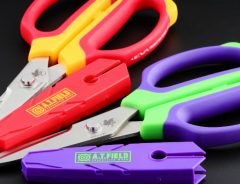
Traditional Japanese Cutlery Maker Releases Neon Genesis Evangelion Craft Scissors
-
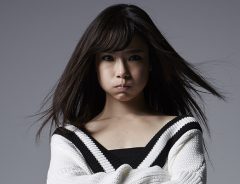
When You Have a Hair-Trigger Switch For Your Public Facade
-
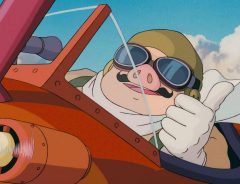
Meaning of pig faces in Porco Rosso, a glimpse at Fio’s future, behind-the-scenes stories revealed
-
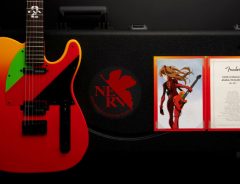
Fender releases Neon Genesis Evangelion guitar modeled after Asuka
-
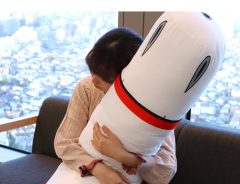
Neon Genesis Evangelion entry plug plushie is your new therapy huggy buddy
-
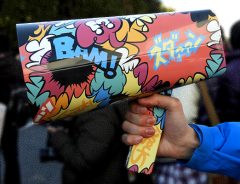
Speak With An Anime Character’s Voice With The Astonishing Animegaphone!


A new series: "Words that changed my life"
We're happy to announce the beginning of a new special interview series at grape Japan: "Words that changed my life."
In this series, we'll interview leading figures in the fields of manga, anime, music, acting, voice acting, cosplay, wrestling, entertainment and more, focusing on words or scenes from manga, anime, video games, tokusatsu, etc. that had a profound impact on their lives.
To kick off the series, we're very honored to present an interview with the legendary anime singer Hironobu Kageyama 影山ヒロノブ, known as "The Prince of Anisong."
Interview with Kageyama Hironobu
Kageyama Hironobu chose a powerful line from Hayao Miyazaki's post-apocalyptic science-fiction manga Nausicaä of the Valley of the Wind, serialized between 1982 and 1994. The first two volumes of the seven-volume epic formed the basis for the more famous 1984 animated film, and set the stage for the establishment of Studio Ghibli in 1985. In our interview, we learned about Kageyama's experience with both the manga and the anime, and the different ways in which the specific words he chose from the manga inspired him and influenced his life.
First impressions
grape Japan (Ben K): When was the first time you recall reading the manga Nausicaä of the Valley of the Wind (hereinafter abbreviated as Nausicaä)?
Hironobu Kageyama: Well, I watched the film first. I knew there was a manga but I assumed it would be the same as the movie so I didn't read it. The manga has a total of seven volumes and at that time, six of them had already been published. So, that's when I started reading it. I remember being so moved and I couldn't wait for the seventh volume to come out. I wonder what year that was. 1993?
Ben K: That's when Volume 6 came out, so it makes sense. What was your impression when you saw the film?
Hironobu Kageyama: Nausicaä was the first film I ever saw by Hayao Miyazaki. The personalities of the characters appealed to me. Also, the story and the message that Miyazaki wanted to convey, such as the resilience and the propensity for kindness inherent in human beings, spoke directly to me. I was so impressed. It may have been the first time I was so moved by a manga or anime.
Ben K: You also read manga and watched anime when you were a child, right?
Hironobu Kageyama: Of course, being Japanese (laughs).
Ben K: But you were more deeply moved by the Nausicaä anime than the works you enjoyed as a child.
Hironobu Kageyama: Yes, I was very moved by the way Miyazaki's thoughts on modern society and his vision for the way humanity should be came through. Of course, I was also moved by some of the works I enjoyed as a child such as Space Battleship Yamato, but they were of a different nature. The way Miyazaki satirizes modern society and his strong message moved me on a deeper level.
Hironobu Kageyama's personal bookshelf revealing two complete sets of "Nausicaä of the Valley of the Wind" Animage Comics Wide Edition 「風の谷のナウシカ」アニメージュ・コミックス・ワイド判 (Tokuma Shoten 徳間書店, 1995 1st ed.) | Image reproduced with permission from Hironobu Kageyama
Ben K: I see. So, then you began reading the manga. How were your impressions different when compared to the anime?
Hironobu Kageyama: The anime only covered something like a fraction of the material of the manga. The story continued to develop in so many ways within the pages of the manga. And the final seventh chapter moved me so much... Comparing the film and the manga, when it comes to the breadth of the scale, length of the story, and the strength of the message, I think the manga is on a completely different plane.
Words that changed Hironobu Kageyama's life
Ben K: I'd like to talk about the quote you chose. In the message you sent before this interview, you said you were struck by Nausicaä's strong spirit, as expressed in this powerful quote, of accepting both the purity and impurity of the world and making her best effort to live within it. Could you tell me more about this in detail?
Hironobu Kageyama: Well, whether it's with our environment or our society, the world we live in today is full of problems. Humanity has sacrificed so much for the sake of its civilization. I think Hayao Miyazaki wants to tell us that we as human beings need to really consider such issues.
In Nausicaä, there's a scene where we see the ruins of ancient spaceships in the Sea of Corruption where life can no longer live. These ships were from the apocalypse that they call the Seven Days of Fire. And in this scene, some of the elders point out: "Those spaceships used to travel all the way to the moon." I think the scene is symbolic of the story of Nausicaä, set in a world trying to rebuild itself after having once been destroyed due to humanity's conceit.
Depiction of the apocalyptic "Seven Days of Fire" in the animated feature film Nausicaä of the Valley of the Wind | © Studio Ghibli
So, at first, this is how I thought: This is something that people were already saying in the 1990s, but modern human society continues to head in a bad direction as a result of our conceited ways. If we don't do something about it, we face nuclear war. There are more nuclear warheads in existence to wipe out the world many times over and then some. Just looking at the morning news every day, whether it's Afghanistan or other places, we can see the world is overflowing with all kinds of conflict. People know this, but they just take the attitude that there's nothing they can do about it...
I think this ties into Hayao Miyazaki's message and the quote I chose. (Near the end of the manga), a strange god-like being (the Master of the Crypt) made by artificial intelligence tells Nausicaä that the previous breed of humans who are prone to do bad things are no longer needed. Through the power of science, this intelligence wants to create a new and gentle breed of humans who won't wage wars or sully the environment, new humans they want to populate the planet with. But Nausicaä disagrees. What makes us human is the fact that we have both good and bad within us, and a completely pure human being is impossible, she says. But the (Master of the Crypt) says that the previous breed of human won't be able to survive in their "purified" earth. And this is where Nausicaä says: "We are like birds, forever going beyond that morning, spitting out blood as we fly!" In other words, even if trying to face that new world will cause her (and her breed of humans) to spit up blood and die, they'll continue to do so time and time again. Those words moved me so much.
Drawing inspiration from Nausicaä
Ben K: Thank you. You talked about the world, but in your own life, whether it's your professional life making music or in your personal life, have there been situations when you faced challenges and thought of those powerful words uttered by Nausicaä?
Hironobu Kageyama: Many young people today look at someone like LiSA and say: "I want to become an anisong singer!" That's the kind of status that the profession of anisong singer has now gained. I think it's wonderful that anisong singers as a group continue to earn recognition in society, but at the same time, I think there's something we anisong singers shouldn't forget. I think the most important part of our job is to work in collaboration with the anime towards lifting people's spirits through positive energy. Ever since I realized that this was at the core of my life, for example when making songs in JAM Project, I've been filled with a sense of mission. I think it's the same spirit expressed by Nausicaä in those words. Even if it's something simple, I've come to realize I need to send positive energy to the people of the world.
Nausicaä in the animated feature film Nausicaä of the Valley of the Wind | © Studio Ghibli
Inspiring others beyond the pandemic
Ben K: Everyone in the world has both dark and light sides to them, so you'd like to inspire them to remember the bright side even in the midst of darkness and hardship.
Hironobu Kageyama: Yes. However, that kind of spirit has sadly weakened during the pandemic. It's the same with J-pop in general, but I think creating and releasing music is one way for us anisong singers to lift people's spirits. In Japan, from ancient times, people have relied on festivals and regional events to stay positive, but we aren't able to do any of that now. In this situation where we can hardly have any concerts and where major events have mostly been canceled, musicians such as myself need to figure out what we can do. I have the impression I'm being tested, as if something or someone is challenging me, asking me: "What can you possibly do in this pandemic?" I might not be Nausicaä, but there's something inside me that wants to say, as she did in her way: "No matter the circumstances, we can always make efforts to forge a path to the future."
We can only make music at home these days. I mean, it's not like I can go out with my whole band and do rehearsals here and there. My daughter is aspiring to become a musician and right now, she's busy studying music arrangement. So, for about a year now, I've been working with her. Once a month, we create a new song and perform it live online. I think that's my answer to what I can do right now. And I think that's the positive message that I learned from Nausicaä and from Hayao Miyazaki.
Ben K: I see. You talked about your daughter. That's so important, isn't it, helping the next generation?
Hironobu Kageyama: Yes. I feel sorry for young people in this current situation. Around the world, there are many people, especially in their teens and twenties, who are thinking about getting into the entertainment industry, but it's like this pandemic is holding them back. Musicians such as myself earnestly hope that these young people can get through these difficult times and not give up on their long-held dreams.
An international conversation-starter
Ben K: I have a final question. You often go on international tours, but have you ever had the opportunity to talk about Nausicaä with non-Japanese people?
Hironobu Kageyama: I used to go quite frequently to English conversation school. We would often talk about what kind of manga or anime we liked. It's the same with Serena, a teacher and friend, but many of the teachers at this school decided to come and live in Japan because of their interest in anime. So, whenever the conversation turned to anime and related culture, things would really get lively. When it comes to Nausicaä, many of them knew the movie but hadn't read the manga, so I'd tell them: "You absolutely should read the manga!" I promoted it to them! "There's an English translation too, so please read it!" I told them many times.
Hironobu Kageyama's personal bookshelf revealing the complete set of the English translation Nausicaä of the Valley of the Wind Box Set (Viz, 2012). Image reproduced with permission from Hironobu Kageyama.
Ben K: Before the interview, you told me that you had bought the English version. Was that in reaction to your conversations with your teachers?
Hironobu Kageyama: Yes. I thought it would be more enjoyable to use a topic I liked rather than the standard textbooks only designed to teach. As for Nausicaä, the language is very difficult but I thought I'd like to be able to read a book like that in English one day.
Nausicaä and the environment
One thing that occurred to me is that, compared to most Japanese people, my teachers felt a greater sense of urgency regarding environmental issues. Although Japan is said to be an industrial nation, and an advanced nation, I think each and every one of us needs to realize that there's more we can do to protect our natural environment, not just as a government slogan, but on a personal level. If we don't become more aware of this, things will continue to get worse. I think this is something I learned from those teachers as well.
Ben K: Nausicaä really does address environmental issues, doesn't it? Before you met those teachers, had your awareness of environmental issues changed thanks to reading Nausicaä?
Hironobu Kageyama: I think so. For example, whether it's cars or other things, the convenient aspects of modern civilization make our lives easier, and in a sense, more enjoyable. Nowadays, there's a movement to have all cars run on electricity by 2030. People are aware of this in their minds, but it's sometimes hard to get motivated to do something about it. I'm not only talking about cars. But now, I think that even if it's something small, I'd like to try making changes to ensure a brighter future.
Ben K: Thank you very much for your time today.
Hironobu Kageyama
© HIGHWAY STAR, Inc.
In 1977, at the age of 16, Hironobu Kageyama made his professional debut with the band LAZY releasing hit songs like 「赤頭巾ちゃん御用心」akazukin-chan goyōjin (Watch out Little Red Riding Hood) and "DREAMER." After LAZY disbanded in 1981, he went on to pursue his career as a solo singer.
In 1985, Kageyama made his debut as an anime and tokusatsu singer with the theme song for the Super Sentai series 『電撃戦隊チェンジマン』 (Dengeki Sentai Changeman). Thus began a stellar career in which he has continued to sing world-famous anime and tokusatsu songs. Some of his more famous hits are the theme song for 『聖闘士星矢』 (Saint Seiya), 「聖闘士神話~ソルジャードリーム」 seinto shinwa sorujā dorīmu ("Saint Shinwa: Soldier Dream") (1988) and the opening song for 『ドラゴンボールZ』 (Dragon Ball Z), "CHA-LA HEAD-CHA-LA" (1989), which sold 1.3 million copies.
All told, he has been in charge of more than 1,000 anime songs and is still going strong. In addition to his solo career, he's the leader of JAM Project, a super group in the anisong world which was established in 2000.
In recent years, he has appeared at many anime events overseas, including in Los Angeles, Paris, and Abu Dhabi. Moreover, as an anisong artist who writes, composes, arranges, and produces, he has been actively involved in a number of projects, including providing music for J-pop artists and virtual musicians.
Links